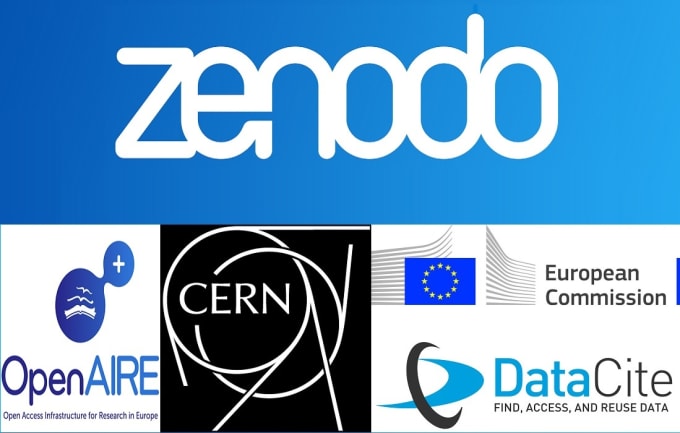Triglyceride/Glucose Index in Young Myocardial Infarction Patients
DOI:
https://doi.org/10.5281/zenodo.10021078Keywords:
Young, myocardial infarction, STEMI, NSTEMI, triglyceride/glucose indexAbstract
Aim: Acute myocardial infarction (MI) is one of the most important causes of morbidity and mortality. Although MI is less common in young patients than in elderly patients, the mechanism of occurrence and risk factors are relatively different compared to elderly patients. The aim of this study was to investigate whether there is an association between young MI and Triglyceride/Glucose index (TyG), an easily calculated index used to predict insulin resistance.
Material and Method: A total of 130 patients, 65 of whom had acute MI under the age of 40 years and 65 of whom were controls, were included in the study. Clinical status, angiography results, comorbidities, hematologic and biochemical markers and TyG index were compared retrospectively.
Results: Glucose (p=0.001) and white blood cell (WBC) count (p<0.001) were higher, while high density lipoprotein (HDL) (p<0.001), albumin (p=0.006) and hemoglobin (p=0.005) were lower in the young MI group compared to the control group. There was no statistically significant difference in TyG between the young MI group and the control group.
Conclusion: In this study, although no association between TyG and young MI patients could be demonstrated, its use in elderly MI patients is beneficial as a result of previous studies in the literature.
Downloads
References
Byrne RA, Rossello X, Coughlan JJ, et al. ESC Scientific Document Group. 2023 ESC Guidelines for the management of acute coronary syndromes. European heart journal, 2023; ehad191. Advance online publication.
Trzos E, Uznańska B, Rechciński T, Krzemińska-Pakuła M, Bugała M, Kurpesa M. Myocardial infarction in young people. Cardiology Journal, 2009; 6:4: 307-311.
Jalowiec DA, Hill JA. Myocardial infarction in the young and in women. Cardiovascular clinics, 1989; 20:1:197-206.
Sood A, Singh A, Gadkari C. Myocardial Infarction in Young Individuals: A Review Article. Cureus, 2023;15:4.
Faresjo A, Karlsson JE, Segerberg H, Faresjo T, Lebena, A. Cardiovascular and psychosocial risks among young patients with Acute Myocardial Infarction.2023;23:121
Spencer FA, Goldberg RJ, Becker RC, Gore JM. Seasonal distribution of acute myocardial infarction in the second National Registry of Myocardial Infarction. J Am Coll Cardiol 1998 May;31:61226–33.
Gao H, Wang Y, Shen A, Chen H, Li H. Acute myocardial infarction in young men under 50 years of age: clinical characteristics, treatment, and long-term prognosis. International Journal of General Medicine, 2021; 9321-9331.
Eddy D, Schlessinger L, Kahn R, Peskin B, Schiebinger R. Relationship of insulin resistance and related metabolic variables to coronary artery disease: a mathematical analysis. Diabetes care, 2009; 32:2: 361–366.
Çetin Şanlıalp S , Nar G, Gunver MG. Elevated triglyceride glucose index is related to the presence of heart failure. Journal of Istanbul Faculty of Medicine ,2022; 85:1: 51-58 .
Selvi NMK, Nandhini S, Sakthivadivel V, Lokesh S, Srinivasan AR, Sumathi S. Association of Triglyceride-Glucose Index (TyG index) with HbA1c and Insulin Resistance in Type 2 Diabetes Mellitus. Maedica, 2021;16:3: 375–381.
Zhang X, Zhang T, He S. et al. Association of metabolic syndrome with TyG index and TyG-related parameters in an urban Chinese population: a 15-year prospective study. Diabetol Metab Syndr 2022;14: 84
Thygesen K, Alpert JS, Jaffe AS, et al. Executive Group on behalf of the Joint European Society of Cardiology (ESC)/American College of Cardiology (ACC)/American Heart Association (AHA)/World Heart Federation (WHF) Task Force for the Universal Definition of Myocardial Infarction. Fourth universal definition of myocardial infarction. Circulation, 2018;138:20: e618-e651.
Simental-Mendía LE, Rodríguez-Morán M, Guerrero-Romero F. The product of fasting glucose and triglycerides as surrogate for identifying insulin resistance in apparently healthy subjects. Metabolic syndrome and related disorders,2008; 6:4: 299–304.
Sagris M, Antonopoulos AS, Theofilis P, et al. Risk factors profile of young and older patients with myocardial infarction. Cardiovascular Research,2022: 118:10:2281-2292.
Kitulwatte ID, Pollanen MS. A comparative study of coronary atherosclerosis in young and old. Am J Forensic Med Pathol 2015;36:323–326.
Virmani R, Kolodgie FD, Burke AP, Farb A, Schwartz SM. Lessons from sudden coronary death: a comprehensive morphological classification scheme for atherosclerotic lesions. Arterioscler Thromb Vasc Biol 2000;20:1262–1275.
Larsen GK, Seth M, Gurm HS. The ongoing importance of smoking as a powerful risk factor for ST-segment elevation myocardial infarction in young patients. JAMA Intern Med 2013;173:1261–1262.
Roever L, Resende ES, Diniz AL, Penha-Silva N, Veloso FC, Casella-Filho A, Dourado PM, Chagas AC. Ectopic adiposopathy and association with cardiovascular disease risk factors: the Uberlandia Heart Study. Int J Cardiol 2015;190:140–142.
Lovic D, Piperidou A, Zografou I, Grassos H, Pittaras A, Manolis A. The Growing Epidemic of Diabetes Mellitus. Current vascular pharmacology, 2020;18:2:104–109.
Petersen KF, Dufour S, Morino K, Yoo PS, Cline GW, Shulman GI. Reversal of muscle insulin resistance by weight reduction in young, lean, insulin-resistant offspring of parents with type 2 diabetes. Proceedings of the National Academy of Sciences of the United States of America,2012; 109:21: 8236–8240.
Tahapary DL, Pratisthita LB, Fitri NA, et al. Challenges in the diagnosis of insulin resistance: Focusing on the role of HOMA-IR and Tryglyceride/glucose index. Diabetes & metabolic syndrome, 2022;16:8: 102581.
Luo E, Wang D, Yan G, et al. High triglyceride-glucose index is associated with poor prognosis in patients with acute ST-elevation myocardial infarction after percutaneous coronary intervention. Cardiovascular diabetology, 2019; 18:1: 150.
Mao Q, Zhou D, Li Y, Wang Y, Xu SC, Zhao XH. The Triglyceride-Glucose Index Predicts Coronary Artery Disease Severity and Cardiovascular Outcomes in Patients with Non-ST-Segment Elevation Acute Coronary Syndrome. Disease markers, 2019; 6891537.
da Silva A, Caldas APS, Hermsdorff HHM, et al. Triglyceride-glucose index is associated with symptomatic coronary artery disease in patients in secondary care. Cardiovasc Diabetol 2019;18: 89
Downloads
Published
How to Cite
Issue
Section
License
Copyright (c) 2023 Chronicles of Precision Medical Researchers

This work is licensed under a Creative Commons Attribution-NonCommercial-ShareAlike 4.0 International License.





